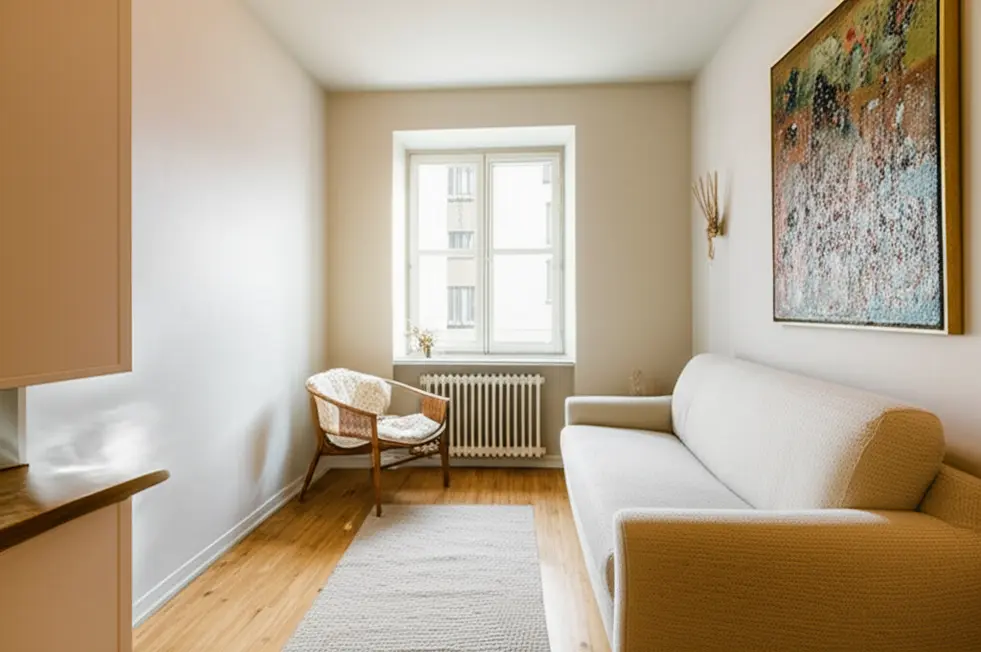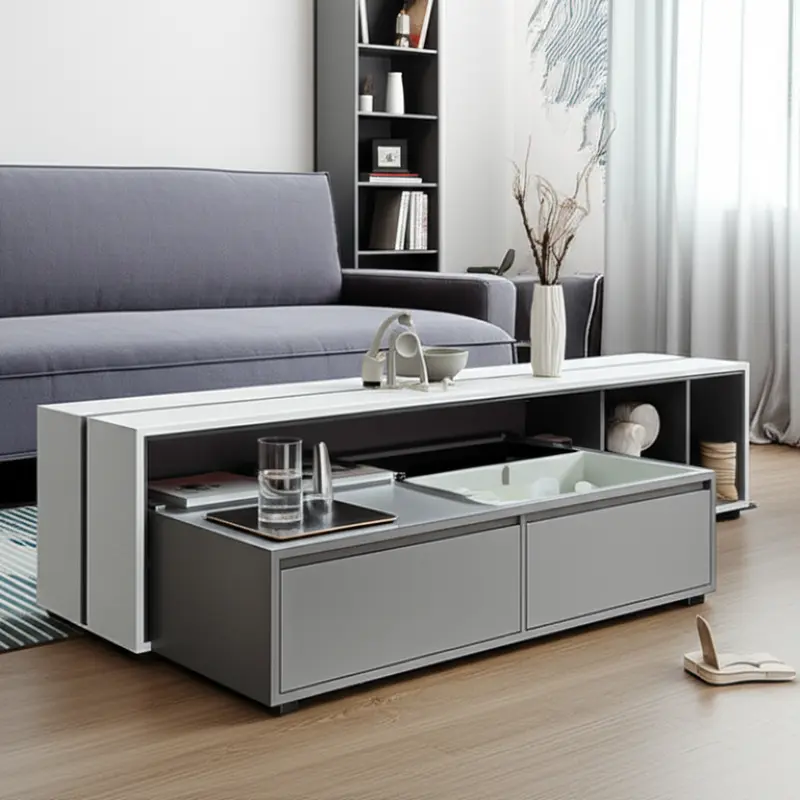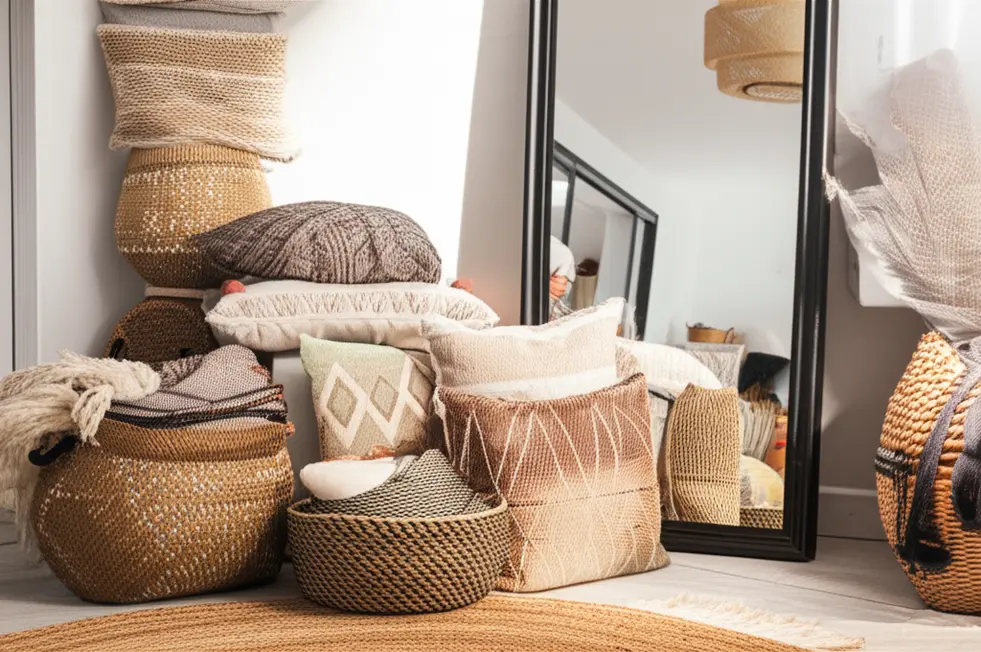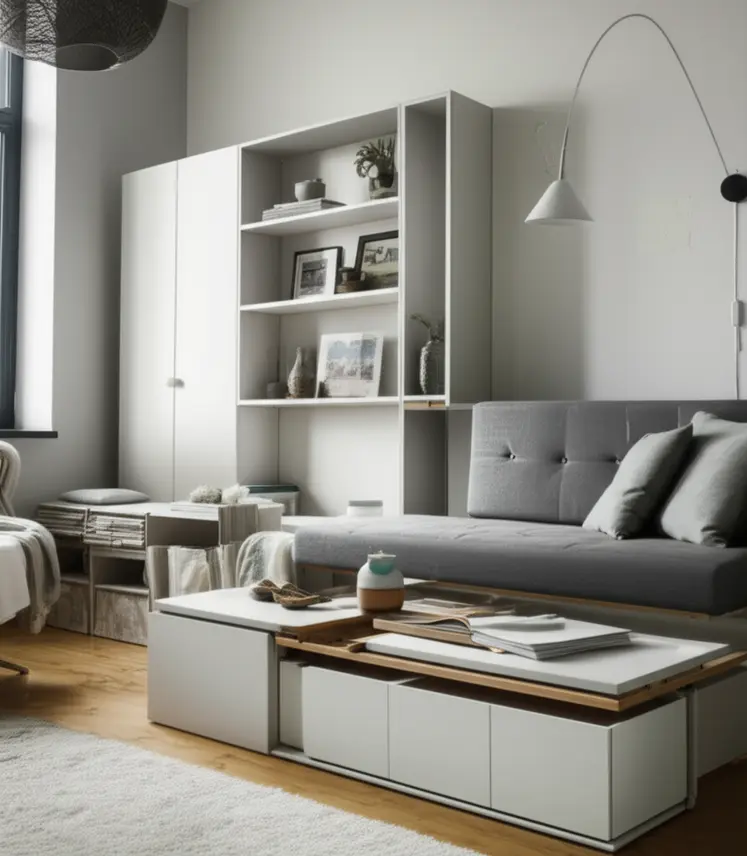Small living spaces offer unique decorating challenges that blend style and function. Creating a cozy, aesthetically pleasing atmosphere while optimizing every square foot is crucial. This guide delves into essential strategies across four pivotal areas: color and wall choices, furniture optimization, effective layout and styling, and the use of accessories and textures. Together, these elements embody the essence of modern minimalist and Japandi styles, ensuring that your small living area emanates tranquility and chic design.
Painting Petite: Color and Wall Strategies for Small Living Spaces

Mastering the art of decorating a small living space hinges on strategic choices that maximize both style and spaciousness. When it comes to achieving this, color and wall treatments play a pivotal role in shaping how a room feels and functions. They have the power to transform a cramped area into a haven that feels both inviting and expansive.
One of the most impactful strategies involves embracing light, neutral colors on your walls. Think soft whites, gentle grays, and creamy beiges. These shades serve as a blank canvas, reflecting natural light and creating an immediate sense of airiness. This approach is particularly effective in rooms with limited natural light, helping to brighten the space and prevent it from feeling enclosed. A lighter taupe can be another great way to add a hint of warmth and color to the room, maintaining the feeling of openness.
Beyond the basics, you can introduce depth and visual interest using accent walls. Rather than overwhelming the space with multiple competing features, consider a single, thoughtfully chosen wall. A dark blue accent wall, for instance, can provide a sophisticated contrast and add a touch of drama without making the room feel smaller. The key is to balance these richer tones with lighter shades elsewhere, creating a harmonious aesthetic. You can also use subtle pops of color through accent pieces like cushions and throws to introduce personality without cluttering the visual field.
Wall strategies go beyond just color. Consider the use of texture and architectural details. A classic white wall can be elevated through the inclusion of luxe finishes or subtle architectural details. This can be done by using elements like shiplap painted white or by incorporating wainscoting. The goal is to add tactile richness and prevent a flat, uninspired aesthetic. For those looking to add decor, there are other wall strategies that can be used, such as using mirrors to add to the space. Strategically placing a large mirror can help to visually expand the room, reflecting light and creating the illusion of more square footage.
Another effective technique involves thoughtful art placement. Instead of traditional hanging, consider leaning framed prints on shelves or window ledges. This adds flexibility and prevents the walls from feeling cluttered. Muted-tone art blends seamlessly into a light-colored wall, decorating the space without overpowering it. Creating a cozy nook is another clever trick to maximize space. This helps make the area feel useful and aesthetically appealing.
Combining light neutral base colors with strategic accent hues and textural elements is crucial for small living rooms. Choosing the right wall decor enhances the perception of space and makes the room feel chic. For more insights on creating a cozy and stylish living space, check out https://urbanvibeblog.com/ceramic-diy-art-cozy-room-ideas/. This approach is essential to transforming compact living areas into environments that are relaxing and inviting.
Smart Furnishings: Curating the Perfect Pieces for Your Small Living Room

Crafting a stylish and comfortable small living space hinges on making smart furniture choices. When square footage is at a premium, every piece must contribute to both aesthetics and functionality. This chapter delves into expert-backed strategies for selecting furniture that maximizes your space, promotes an open feel, and reflects your personal style.
One of the foremost principles is opting for multifunctional and compact furniture. Think beyond the traditional sofa and explore options like storage ottomans that double as seating and hideaway storage. Fold-out sleeper sofas provide guest accommodations without sacrificing daily living space. Nesting tables offer flexible surfaces, tucking away neatly when not in use but ready to provide extra room for drinks, books, or laptops. By choosing items that serve multiple purposes, you effectively declutter the visual space and increase utility.
Beyond multi-functional pieces, it’s crucial to make every key piece work hard. This means choosing furniture with built-in features that reduce the need for additional accessories. For instance, a sofa with integrated storage beneath the cushions eliminates the need for separate storage units, keeping the room streamlined. A coffee table with shelves provides a place to store magazines, remotes, or decorative items, keeping the surface clear and uncluttered. Also, look for sofas with stylish design details—like elegant curves or button tufting— which add visual interest without demanding extra decorative elements.
Scale and proportion are non-negotiable. Avoid the common mistake of forcing oversized furniture into a small room. Doing so will quickly make the space feel cramped and unwelcoming. Instead, choose furniture that is appropriately scaled to the room’s dimensions. A smaller-scale sofa, a slender console table, and compact accent chairs will help to maintain balance and flow. Resist the urge to fill the room with numerous small pieces; a few well-chosen, well-proportioned items are better than a multitude of mismatched ones.
Finally, consider using symmetry and layout in your small living room. Arrange furniture symmetrically around a focal point, such as a fireplace or a feature wall, to create a sense of order and calm. Even in a small space, this principle can help to visually balance the room and make it feel more cohesive.
To maximize the impact of your furniture choices, consider some complementary design tips. Strategically placed mirrors can reflect light and create the illusion of more space. A cohesive color palette across all furnishings promotes visual harmony, preventing a cluttered or chaotic look. Incorporating soft textures like cushions or plants (like a low-maintenance money plant) can soften the room and make it feel inviting, without taking up too much space. For more inspiration, check out these cozy room ideas at https://urbanvibeblog.com/ceramic-diy-art-cozy-room-ideas/. Ultimately, choosing the right furniture is about making considered choices that blend style with practicality, transforming limited space into a stylish and inviting haven.
Crafting Space: Smart Layout and Styling for Small Living Homes

Building upon the foundational furniture choices discussed previously, the strategic arrangement and styling of your space are paramount in small living home décor. The goal is to maximize the usable area while creating an environment that feels open, inviting, and reflects your personal style. These techniques are about more than just fitting furniture; they’re about designing a lifestyle within the confines of a smaller footprint.
One powerful layout technique is what’s known as the ‘broken plan’ approach. Instead of the often-used fully open-plan concept, which can sometimes feel cavernous and lack definition in a smaller space, consider partial visual separations. This might involve a strategically placed jutting wall or the use of glass doors to delineate zones, such as separating the living area from a home office nook or the entryway. This method maintains an airy, open feel while providing structure and purpose to each distinct area within your home. Similarly, creating openings, such as a serving hatch between the kitchen and living room, or even partially open walls behind a sofa, can visually expand the space by allowing light to flow more freely between rooms and adding a sense of interconnectedness. For more inspiration, check out this guide on cozy room ideas: https://urbanvibeblog.com/ceramic-diy-art-cozy-room-ideas/.
Floating furniture also works wonders for creating the illusion of spaciousness. This involves selecting pieces with slim legs or mounting shelves and planters directly on the walls, thereby keeping the floor as visible as possible. The principle behind this is to minimize visual clutter at ground level, which tricks the eye into perceiving more available space. Think of it as creating breathing room for your flooring, allowing the light to bounce and expand the perceived dimensions of the room. Another element is the careful creation of cozy nooks within awkward or unused spaces. An alcove can be transformed into a reading corner with a comfortable chair, a small bookshelf, or built-in seating that often includes hidden storage, thereby adding both functionality and charm.
Beyond the layout, clever styling is equally important. Mixing pieces of differing scales is a proven technique. For instance, pair a compact coffee table with a larger sofa or hang oversized art to generate depth and a sense of curated design. This strategy prevents the space from feeling cramped and instead suggests intentional design choices. Finally, embrace texture and pattern over overwhelming color schemes. Integrate personality through tactile elements like ribbed vases, woven ottomans, and patterned cushions while mixing matte and shiny finishes for a subtle yet cohesive aesthetic. Decorating vertically also plays a huge part. Use tall bookshelves, hanging lights, tall plants, or gallery walls to draw the eye upward and make a small space appear taller and airier. All these techniques work together to create a living space that’s not only stylish but also incredibly functional, reflecting your unique tastes while maximizing the space available.
Texture and Touch: Elevating Small Spaces with Tactile Décor

The art of decorating a small living space is as much about feeling as it is about seeing. Beyond the strategic use of color and the smart selection of furniture, the thoughtful integration of texture and accessories can transform a cramped room into a cozy sanctuary. In this chapter, we’ll explore how to use these elements to their fullest potential, enhancing the look and feel of your small living home décor.
One of the most effective strategies is to curate accessories with intention. In a small space, clutter is the enemy. Therefore, the key is to choose a few standout pieces that speak volumes rather than overwhelming the room with numerous trinkets. Consider the strategic placement of mirrors, not only for their ability to reflect light and create a sense of spaciousness but also for their potential as artistic statements. Similarly, incorporate plants or nature-inspired items. A touch of greenery introduces a fresh, organic element, adding visual interest and a welcome connection to the outdoors. These items help to create a more inviting atmosphere. If your room has dark elements, such as a wood-paneled wall, you might consider balancing them with lighter-toned rugs or cushions to prevent the space from feeling too dark.
Texture, in particular, is a powerful tool. It introduces depth and tactile interest that prevents the room from looking flat or uninspired. Consider layering different materials to create a rich and inviting environment. Imagine the contrast between a velvet cushion, a linen throw, and a woven ottoman. This mix of materials adds depth without sacrificing space. A neutral base provides the perfect canvas. Soft whites, grays, and beiges on walls and large furniture reflect light, making the space feel larger and brighter. Against this backdrop, textured elements can truly shine. Think of the subtle elegance of a ribbed vase or the rustic charm of a woven basket. The key is to play with these contrasts to generate visual interest. This is where you can find some great ideas, from inspiration to how-to guides, on the urbanvibeblog.com/ceramic-diy-art-cozy-room-ideas/ site.
Practicality also plays a vital role. Look for multifunctional furniture. Ottomans with built-in storage, for example, offer both textural appeal through their upholstery and a place to stow away clutter. Furthermore, think about how you can use lighting to enhance the textures in your room. Pair textured fabrics with lighting that will highlight surfaces like velvet pillows or woven baskets. By carefully selecting a few curated accessories, such as mirrors and plants, and layering textiles featuring varied materials, you can elevate your small living area’s décor both visually and tactilely without sacrificing spaciousness. This approach balances style and functionality by maximizing light reflection and adding warmth through textural layers—a proven formula for making small homes feel bigger yet inviting, and, most importantly, a true reflection of your personal style.
Final thoughts
Creating a small living space that is both stylish and functional involves educated choices in color, furniture, and layout. By focusing on minimalist principles and the serene aesthetics of Japandi influences, you can achieve a welcoming atmosphere that doesn’t compromise on style. Throughout this guide, we’ve explored essential strategies that contribute to a cohesive and calming decor, making even the tiniest living areas feel expansive and filled with character.
Explore more at Urban Vibe blog to find tips and inspiration for your small living home décor.
Learn more: https://urbanvibeblog.com
About us
Urban Vibe blog is dedicated to providing insightful articles on home décor, design inspiration, and practical tips for creating cozy living spaces. We focus on styles that embrace minimalism, the Japandi lifestyle, and functional interior design, helping you to curate a home that reflects your personality.
